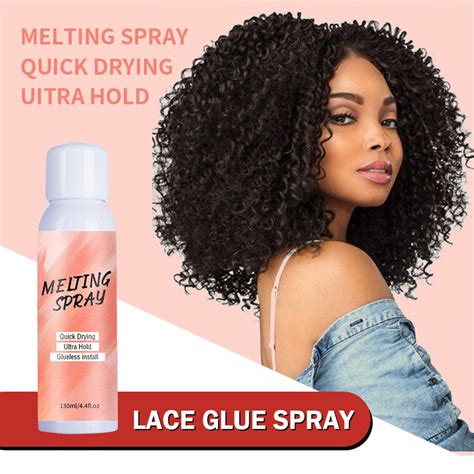When it comes to wearing wigs, finding the right glue is crucial for a secure and natural-looking hold. With countless options available, selecting the best glue for your specific needs can be daunting. In this comprehensive guide, we’ve curated the top 10 glue options for wigs, providing detailed specifications, customer reviews, and expert recommendations.

Understanding the Types of Wig Glue
Before delving into specific products, let’s explore the different types of wig glue:
- Spirit Gum: A classic wig glue made from natural rubber latex. It creates a strong and waterproof bond, but can be harsh on sensitive skin.
- Silicone-Based Glue: A hypoallergenic option that’s easy to apply and remove. It offers a medium hold and is suitable for short-term use.
- Acrylic-Based Glue: A professional-grade glue that provides a long-lasting hold. It can be more difficult to remove, making it appropriate for extended wear.
- Tape Adhesive: A double-sided adhesive tape that can be cut to fit the wig’s edges. It provides a no-sew solution for temporary wig wear.
Top 10 Glue Options for Wigs
1. Ghost Bond XL Platinum: A hypoallergenic silicone-based glue ideal for sensitive skin and scalp.
2. Walker Tape C-22: A waterproof and flexible acrylic-based glue with a strong hold.
3. Lace Front Glue: A creamy, latex-based glue specifically designed for lace wigs.
4. Got2b Glued Blasting Freeze Spray: A versatile spray-on adhesive that provides a secure hold for both wigs and hairpieces.
5. Pros-Aide Cream Adhesive: A water-based, non-toxic glue suitable for medical and professional use.
6. Cramer Lace Bond Adhesive: An alcohol-based, medical-grade glue that creates a long-lasting bond.
7. EBA Bond: A fast-drying, silicone-based glue with a strong hold and minimal residue.
8. Ultra Hold Got2b Glued: A heavy-duty acrylic-based glue for extended wear and high-activity situations.
9. D.O.C. Bonding Glue: A hypoallergenic, water-resistant glue that’s safe for daily use.
10. Sure-Tac Liquid Adhesive: A versatile tape adhesive that can be applied with precision and provides a strong hold.
Key Considerations for Choosing Wig Glue
1. Skin Sensitivity: Choose hypoallergenic options if you have sensitive skin or allergies to latex or acrylic.
2. Type of Wig: Select glue specifically designed for your wig type (e.g., lace wigs, hairpieces, etc.).
3. Hold Strength: Consider the desired hold time and select a glue that meets your needs (e.g., temporary, medium, or extended wear).
4. Waterproofness: If you plan to wear your wig in humid environments or during activities that cause perspiration, opt for a waterproof glue.
5. Residue: Choose glue that leaves minimal residue to avoid damaging your wig or natural hair.
Step-by-Step Application Guide
1. Prepare Your Head: Cleanse the scalp thoroughly with an alcohol-based cleanser and apply an adhesive remover to any previous tape or glue residue.
2. Apply the Glue: Spread a thin layer of glue around the perimeter of the wig’s edge or directly to the scalp.
3. Position the Wig: Carefully align the wig and press it into place, starting from the hairline and working toward the back.
4. Allow to Dry: Hold the wig in place for the recommended dry time, typically around 15-30 minutes.
5. Smooth the Edges: Use a soft brush or towel to gently smooth the wig’s edges and blend them with the natural hair.
Effective Strategies for Extended Wear
1. Use a Wig Cap: Wearing a wig cap will create a barrier between the glue and your scalp, reducing irritation and promoting comfort.
2. Apply a Protective Barrier: Apply a thin layer of petroleum jelly or barrier cream to the hairline before applying glue to protect skin from irritation.
3. Test Glue Sensitivity: Apply a small amount of glue to an inconspicuous area of the scalp 24 hours before use to check for any allergic reactions.
4. Avoid Over-Gluing: Only apply the necessary amount of glue to achieve a secure hold. Over-gluing can lead to residue buildup and damage.
5. Follow Re-application Instructions: Remove the glue from the wig and scalp as per the manufacturer’s instructions and reapply as needed to maintain hold.
Health and Safety Precautions
1. Avoid Prolonged Use: While wig glue is generally safe for occasional use, prolonged use can lead to hair loss, skin damage, and allergic reactions.
2. Use in a Well-Ventilated Area: Glue fumes can be irritating to the respiratory system. Use glue in a ventilated area and avoid inhaling the fumes.
3. Remove Glue Safely: Use a glue remover specifically designed for wig glue to remove it safely from the scalp and wig.
4. Seek Medical Advice: If you experience any skin irritation, hair loss, or other adverse reactions, consult a medical professional immediately.
Creative Applications for Wig Glue
Beyond its primary use in wig wear, wig glue offers a myriad of creative applications:
- Prosthetic Makeup: Create realistic prosthetic makeup effects by using wig glue to adhere artificial features.
- Costume Design: Use wig glue to secure fabric, feathers, and other embellishments to costumes.
- Special Effects: In film and theater, wig glue can be used to create various special effects, such as simulated wounds or facial hair.
- DIY Projects: Use wig glue to adhere materials for creative projects, such as jewelry making, paper crafts, and home décor.
Conclusion
Choosing the right glue for your wig is essential for achieving a secure and comfortable fit. By understanding the different types of glue, considering your individual needs, and following the application and safety guidelines, you can select the best glue to suit your specific requirements and unlock the versatility of wig wear.
